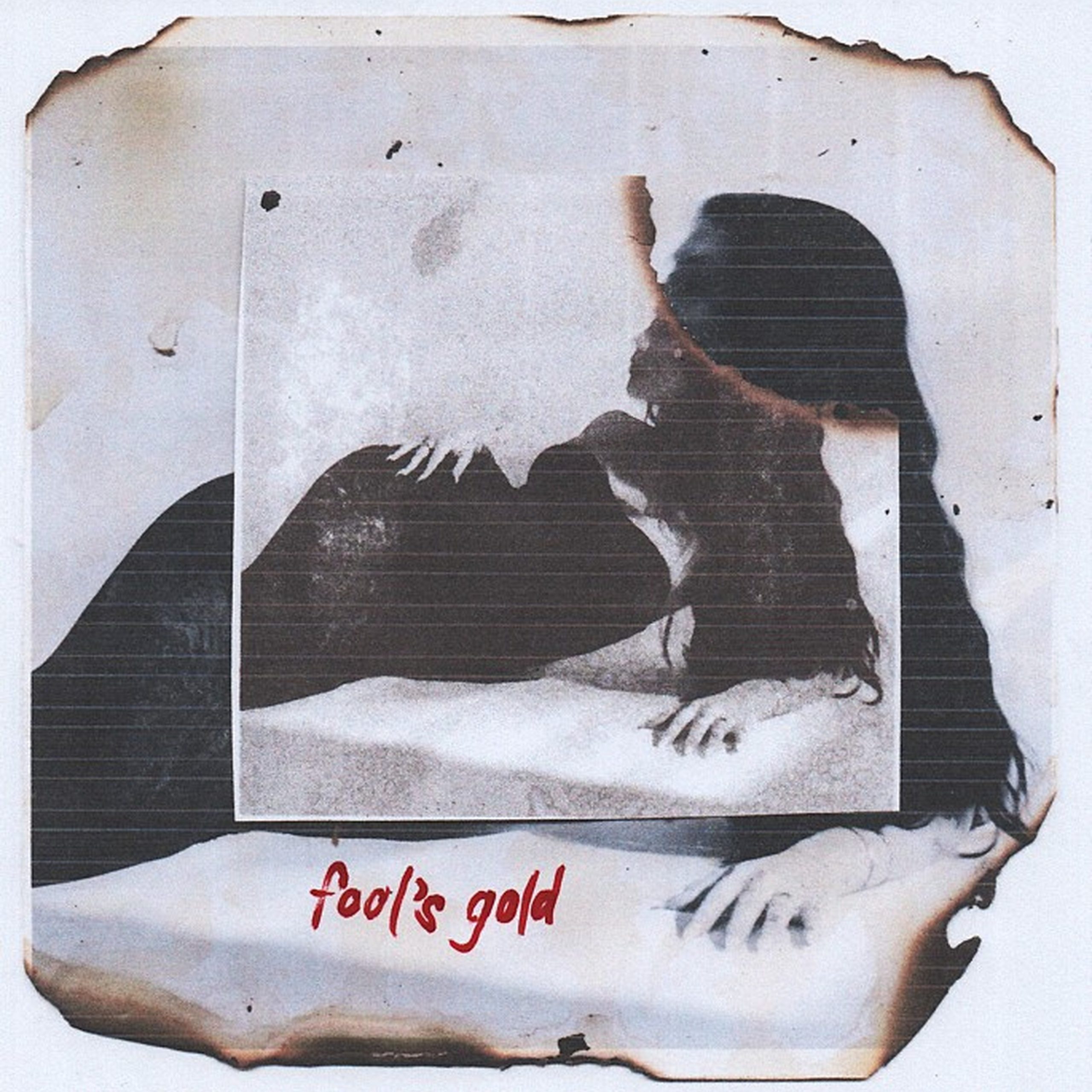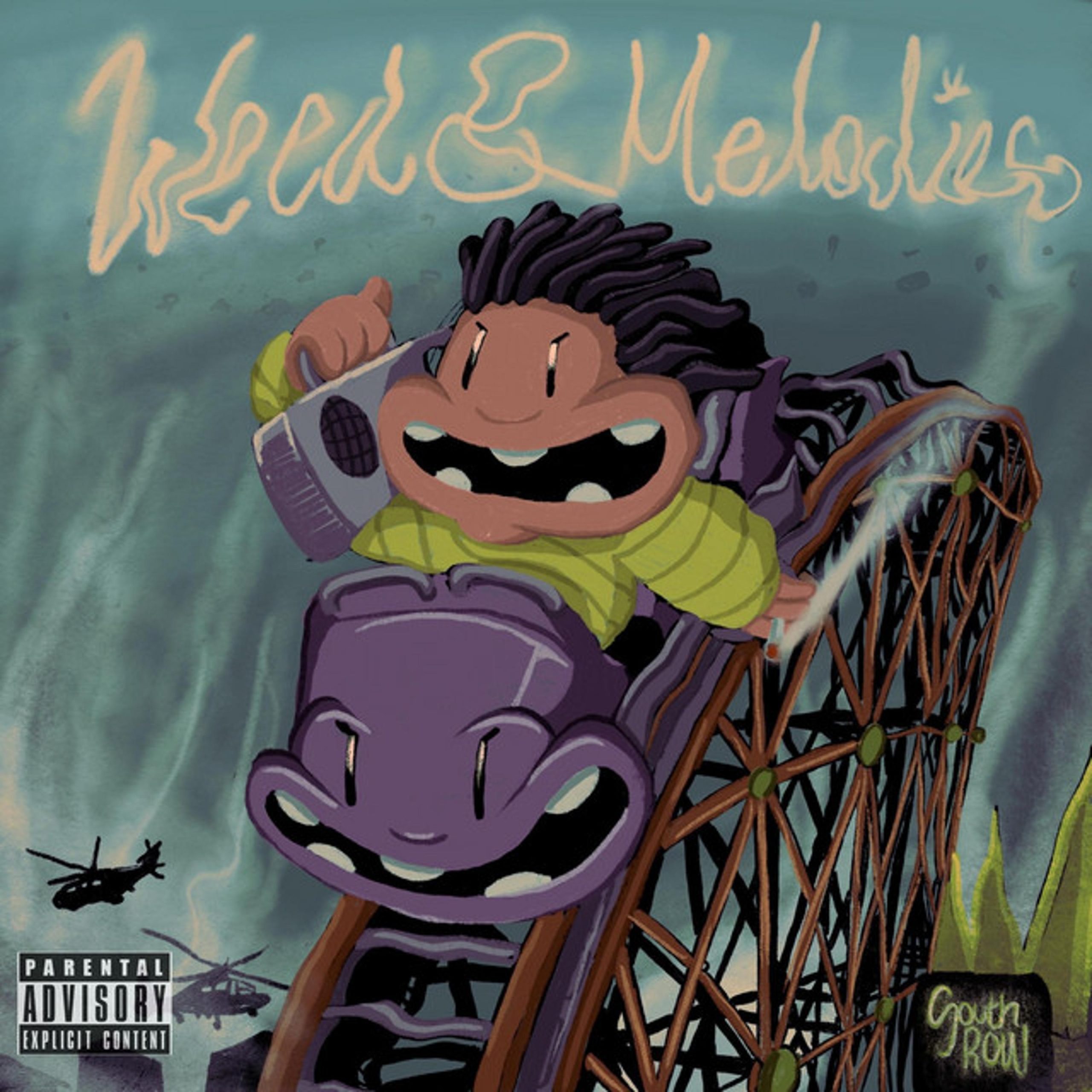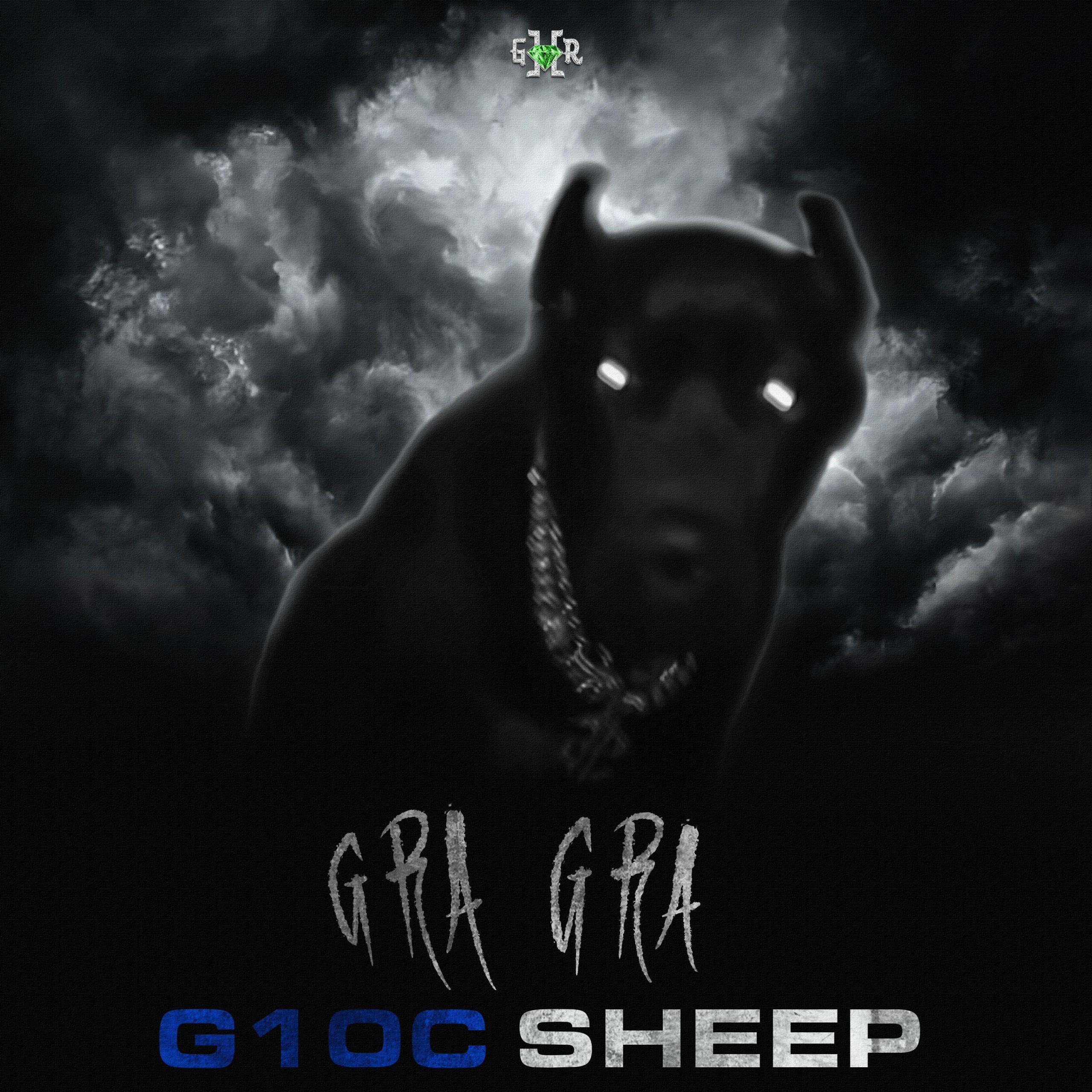Written by Gabriel Bagahansol The interlude of “fool’s gold,” the latest EP from R&B singer-songwriter Jess Connelly, is a song that speaks of unconditional love. In under two minutes, she lays down creeds of a committed monogamy with somebody in spite of the vultures circling around them. The lyrics sung are the words we say to a lover when we know there is trust between the two of you, when acts of love need not be asked and feel like they just fall into place. But putting it another way, these are the things we say to ourselves when we hold on to a stagnating relationship, when complacency sets in, and feelings turn lukewarm. Now you’re desperate to keep the relationship steady, but you know it’s not getting any better, what with the permeating silence and all the lit matches ready to catch a moth. The honeymoon is over, which is why it makes sense that Jess named this track “indelulude.” This interlude is the turning point that bridges the two halves of a collection of songs in which Jess details the life cycle of a love that’s too good to be true: a rendezvous with a flame too thrilling to pass up on, too selfish to settle down with, but too powerful to forget. “fool’s gold” delivers this story upon a backdrop of class and elegance that we’ve come to expect from a Jess Connelly project, provided here by long-time collaborator LUSTBASS. The moody atmosphere of the music and the greyscale cover art bring a noir feel to the EP, especially with the live instrumentation of the opening track “flow.” The sense of space brought by recording a live band, drawn particularly from the cymbal-heavy drumming, complements the feeling of wonder and excitement in wanting to get close to someone new, as though we see two people cozying up to each other at a bar. But it doesn’t take long for mischief to set in. On “fool me twice,” we find that this new person has wandering eyes, and we get a feeling that what the two have between them may not be as serious as she had hoped it to be. Nevertheless, she sticks around for a while, spellbound by a one-sided fling with somebody she couldn’t refuse. But after this hallucination drifts in and out for the last time on “indelulude,” Jess has decided enough is enough. “never fall in love again” talks about the aftermath of this love affair, in which she makes it clear to her former lover that he will feel the absence of her unconditional love. But that doesn’t mean his absence hasn’t affected her either: after getting into a few rebounds, she reveals she might not be able to find true love just yet. The final stage of grief is acceptance, and in the closing track “let the bird fly,” Jess confesses that the time she spent with this man was unforgettable. Over a jittery drum break, we see her rekindle things with him despite everything she learned about people like him throughout this EP. This is the part where the real delusions set in, where acceptance is taken as a chance to blindly start over with someone who will never change and has taught another to do the same. Likewise, “fool’s gold,” in its intoxicating drama set to a warm, cozy score, is a project you will come back to again and again. Jess Connelly’s impeccable writing and composition, combined with LUSTBASS’s ear for space and instrumentation, have produced the perfect soundtrack to get you through a failed relationship, where you’re hung up on the things that could’ve been with someone you needed to get away from. Which brings us to the waltz-like beat at the end of the EP. It goes on for a few bars until it abruptly stops, slowing down like a record no one wants to hear again. Did Jess break the cycle? Were the events in the last song just all in her head? We can only guess the answers to these questions because the story is over. SUPPORT THE ART & THE ARTIST:
Author: Louis Pelingen
ALBUM REVIEW: unikko ijo – kung ipagdaramot ang nadarama, saan ba tayo pupunta?
Written by JK Caray With worn-out confessions scattered across his discography, unikko ijo’s brand of writing has earned him a special place among yearners who cover his songs on a dying digicam or create intricate lyric art that gets passed around their timeline. But after half a decade of writing unrequited ballads, the solo artist seems to have hit a checkpoint. His latest album entitled “kung ipagdaramot ang nadarama, saan ba tayo mapupunta?” shows a different resolve from the same artist who understands a little more about what it means to love. “malayo sa lupa ang bituin” starts the album at its lowest point, thematically. The blaring electronic pianos set an alluring backdrop alongside his defeated quips as unikko ijo contemplates whether it’s worth it to keep loving. Amidst its catchy melody that predates virality, the song also asks the most important question yet, “itatago nalang ba ang nadarama sa iyo?”. Throughout the album, he gradually builds up his answer. Halfway, songs like “kakaiba,” “matiwasay,” and “sapat nang hindi ka magsalita” fluffs up that familiar melding of Manila sound and lo-fi bedroom pop unikko ijo’s known for. The production is much more polished while retaining those intimate imperfections that drive home the sincerity in his words. As always, the solo artist is effective at building choruses that plant themselves in your eardrums. The simple song structure in the form of drum loops and hooky guitar riffs serves not only as a vessel but as the driving force for his talent at infiltrating your emotions with his intimacy and relatability. In “Hiwaga”, we get unikko ijo’s answer in the form of a question that bears the name of the album. “kung ipagdaramot ang nadarama, saan ba tayo pupunta?” shares the sentiment that fruitless longing gets us nowhere. Those unspoken words, stolen looks, and hidden letters all turn to rot on their own. In hoarding your feelings and creating your own stories, you’ve built an inescapable tower, becoming a reminder that self-contained devotion can be selfish. What good does our silent pining do if it’s not to be seen? To be felt? To be transformed into another thing? Where do these intense emotions linger if not become the catalyst of our self-destruction? It may sound harsh for some and inspiring for others, but this is a truth that most of us have forgotten. After all, what use does love have if not shared? The key to all this seems obvious. A line in “malayo sa lupa ang bituin” goes “babaguhin ko ang sarili ko”, a phrase that explains how the singer-songwriter sees the shift in his perspective that led to this album. At a glance, unikko ijo may seem like the type of artist who only has one gimmick, but this release reveals how he is capable of pushing the envelopes of his niche. “kung ipagdaramot” is the kind of album that emerges when an artist becomes aware of the clichés that surround his music and evolves along with it. SUPPORT THE ART & THE ARTIST:
EP Review: SAJKA – Weed&Melodies
Written by Nikolai Dineros Another breakout song in the charts, and Imperial Manila is put on notice by the South yet again. The culprit this time is one Bacoor representative, SAJKA (Sajka Jamaiah Formaran). Though his hit single “Nicotine” is making huge waves in local hip-hop’s algorithmic sphere, SAJKA brings more to the table than TikTok-core bait. Perhaps SAJKA’s table is one filled with residues between tiny crevices and paper rolls rather than ashtrays because “Nicotine” is thematically the farthest you can get from understanding the artistry SAJKA is trying to achieve in his latest EP, Weed&Melodies. The EP is a reggaeton project at its core with the occasional nods to afrobeat and funk, courtesy of Southrow Music producer ODMADEIT. There is no fine print. It is mostly weed and all melodies. Adjacencies to the respiratory system and bad habits aside, the EP is packaged, rolled, and passed along as a THC trip, with explicit references to cannabis use and its effects, and without a single care about the forces under the state’s payroll. SAJKA even takes you on a ride-along in the standout track “Masid.” While the concept is solid on paper, showing SAJKA’s strong potential as a genre-crossing visionary, the EP sometimes falls flat in execution. As a post-release single, “Bogsame” shows signs of fatigue from its initial run, with the song having offered barely anything that hasn’t already been explored in other tracks released prior (you may also look up tracks “Up and Down” and “Masid” that capture the same vibe but better). Even as an opening track, the candidness mixed with the self-indulgence of the ‘me and my friends are high as fuck’ attitude runs its course as quickly as it was introduced, only to make a better comeback in subsequent songs. SAJKA, however, stands out when he fully embraces his reggae calling. “Horns” and “Burnin Paradise” are great displays of the artist in his element, paying homage to the genre he’s inspired by without losing authenticity. There is still the curious case of the EP’s journeyman single. Despite the thematic incongruence already discussed above and the subtle genre shift, “Nicotine” — a hip-hop song first, a reggae song never — is still far from being a black sheep figure in the track list. Its success in the charts is undeniable, and its placement is only to the benefit of SAJKA, as it turns people’s heads to him and his more divergent undertaking. Hence, it plays the journeyman role. But given the state that it’s in, sticking out like a sore thumb in the track list, it is rather interesting that it even exists in the first place. With just as much grasp of information as a common listener, I can only theorize as to why that is the case, of which I have a handful: First, “Nicotine” is an early prototype of Weed&Melodies before they went full reggae, and it somehow made the final cut. Secondly, reggae — even with its hip-hop overtones — is a hard sell, and “Nicotine” was used as an anchor to make it palatable for their target audiences. Lastly (and on a less serious yet more absurd note), tobacco may simply have a larger revenue share than weed in the Philippine stimulants market with more regulatory backing, thus attracting more potential listeners from a larger consumer base. SAJKA is on a path of reinventing himself from just another laidback rapper in Cavite’s already saturated scene with like-minded contemporaries to a convention-breaking fusion artist. With a heavy background in hip-hop and a growing appreciation for adjacent genres like reggae, dance, and funk, “Nicotine” may just be part of the equation to a bigger calling that Weed&Melodies alludes to. Who knows? It might take a few more ‘hits’ before SAJKA reaches that eureka moment. SUPPORT THE ART & THE ARTIST:
TRACK REVIEW: BABY FREEZE – LIL ICE
Written by Faye Allego In scorching hot weather and immense humidity, stepping outside the house feels like it’s destined to sizzle your skin. That isn’t the case for Baby Freeze’s new single, “LIL ICE.” Maybe she’s gifted. Maybe it’s Never Paco’s mixing and mastering. Or maybe she knows how to make a bop that’s simple, fun, and well-witted. Produced by NOIR and wearing eyeshadow that screams a metallic Dior shear meets Re-l Mayer from Ergo Proxy in the track cover art, Baby Freeze not only turns daily affirmations into a catchy tune with her latest track, but coldly presses two questions: are short-form, Y2K-inspired tracks just a nostalgic trend, or can it carve into its own genre? And is it still transgressive when a woman who is unapologetically herself wants the drop bars about owning her own starpower? “LIL ICE” is a fresh example of balancing intuitive songwriting with dance floor appeal; while lots of short electronic hip-hop anthems come to a staggering halt just as the singer is about to reach a lawful bridge, Baby Freeze heatedly affirms the repeat button because every bar like “front row seat and they all fall in line/ and they causin’ a commotion every time they see me smile” bites back without any need for an extension. Perhaps overthinking is unaffiliated with her. Anything a woman raps about that even has a droplet of braggadocio is automatically subject to being labelled as polemic writing. “LIL ICE” is a clapback or a breezy self-affirmation anthem; her carelessness about being a spectacle of negativity reflects the hater and not her talent. An inkling of risk arises as the track fits into the genre of speedy songs masked with the early 2000s cyber aesthetic; the risk of blending in with the influx of this popular happenstance might cause her talent to go unnoticed. SUPPORT THE ART & THE ARTIST:
ALBUM REVIEW: He Forgot He Died – I’ll Be Fine, I Guess
Written by Noelle Alarcon Surrender to the sound. That’s what He Forgot He Died, also known as Tadako, wants you to do. Proudly bearing the title of slowcore, the artist embraces the qualities confined within the genre. It takes from the definitions and descriptions, but “I’ll Be Fine, I Guess” is far from inauthentic. Running a little over 40 minutes, his musings find shelter and comfort in the classifications of his music. Like most songs under the slowcore umbrella, those that make up “I’ll Be Fine, I Guess” accompany and encourage introspection; the discovery of your innermost self. Tadako utilizes the thicker strings of the guitar to echo the weight of vulnerability. This release is as raw as it gets. In “night,” the fourth track of the album, his fingers sliding up and down the frets accompany his somber singing; slightly grating, yet comfortably a sign of his humanity. In “2:34 am,” the crickets and raindrops whisper along the sound of contemplation that drones on. The album’s greatest strength is its candidness; it’s like a friend confiding in you and opening up so you can confide in them too. Though most of the work consists of wandering, with wistful emotions speaking for themselves along the strings of the guitar, it has its moments of upbeatness. They do not reflect vibrance in the traditional sense, though. When there are drums, the ride cymbal and the kick drum are most audibly prominent. They sound more like a heartbeat drumming up during uncertainty; like how the artist admits he doesn’t know where to start in “time.” It’s a skill derived from noticing the littlest details that he’s able to communicate shared anxieties through sound itself. Tadako’s subdued vocals capture the intimacy of his work. His words are simple and read like diary entries; these thoughts don’t rise above the mix, like how vocals usually would. They float through the weighted soundscapes like thoughts at the most quiet hours of dawn; fleeting and indecipherable, honest and filled with regrets. “I’ll Be Fine I Guess” is so undeniably human that it’s heartbreaking, moving, to face the depths of life head on – ”tell mom I’m sorry,” he sings. “I’ll Be Fine, I Guess” explores what there is to do and who to become. It’s an album that knows what it is supposed to be by an artist who loyally sticks to the sound he wants to pursue. In a fast-paced world, people discourage staying in their own comfort zones. This album is a comfort zone worth revisiting and relistening to when things get heavy, especially for fellow advocates of the slowcore genre. The trademark simplicity it carries makes it a sonic shoulder to cry on; an effective set of tunes ready to serve as company. SUPPORT THE ART & THE ARTIST:
SOUNDS OF THE SEA: Voision Xi (China)
Shanghai is a bustling area in China, a dazzling cultural cradle where so much creative artistry has thrived the most. Music, especially, had a prominent presence in the place since the 1920s, acting as the origin place of Shidaiqu – a genre that intertwines Chinese folk and Hollywood film music – as well as the main area for Western jazz to proliferate in the country. Those western influences never strayed, but kept in close distance within so much of Chinese music. Despite the difficulty in opening up people’s perspectives towards Jazz, the jazz scene in Shanghai continues to prosper and branch out into its own territory, letting newer musicians experiment with the genre and bring something unique out of it. Enamoured with the Jazz scene in Shanghai, Voision Xi has set a mission to immerse herself within it, eventually heading there after college to explore her musical endeavors. Despite being self-taught, meeting various musicians while working behind the scenes of JZ Club has trained and taught her immensely, allowing her to jump out into the spotlight in 2015 with Little Happiness Group, a small jazz band that comprised of her and other jazz musicians such as guitarist Zhang Xiongguan and Xiao Jun, saxophonist Li Shihai, and others more. Working together for 3 years has eventually led to their only release in 2018, ‘DEBUT’. A short EP that twists the melodic foundations of tracks like Nick Drake’s “River Man” and Stevie Wonder’s “Cause We’ve Ended As Lovers” into something vibrant. Brewing these classic songs with a different arrangement altogether, a variation done well by Voision Xi alongside the rest of the fellow jazz musicians that have worked with her on this EP. That experimentation only goes deeper, following things up in 2021 with the ‘4 loops in her way’ EP that displays her curiosity with ambient soundscapes. Using nothing but the OP-1 synthesizer and the Ableton Live software to create small, yet expressive ambient pieces. A testing point to her progression as an artist, a tease to how she’ll eventually blend her jazz influences with ambient tapestries. All of this eventually leads to Voision Xi’s debut album in 2022, ‘Lost For Words’. A grand self-expression that pulls so much from her gradual exploration as an artist, bringing so much of her experiences, emotions, and voices that swirl into a lot of fascinating ventures across ambient, folk, and jazz palettes, releasing so many words and expressions worth hearing. Further accompanied by various musicians – names like Kaidi Tatham, ILL MO, and Little Happiness Group being some of them – that amplify the album’s thematic concept. Providing so much distinctive moments across the otherwise impeccably rich record, from the vocal thrills that’s accompanied by nimble guitars and delicate woodwinds on “Monday Spirit”, Voision Xi’s spoken word and ILL MO’s rap flow blending immaculately across the lush jazz flourishes of “Butterfly, A Hyaline Beauty”, the soaring rock crescendos that gives “Magnetic Field” its pulsing rhythm and “Turn on the Planet” a spacious expanse across its lilting ambience, the jazzy freakout that occurs on “Hypnotist”, the lilting samba jam on “Ladders”, and the hypnotic ambient escapades that opens up on “Wolverine (Silent Chaos)” and “Crystalline Improv”. Skyrocketing Voision Xi’s artistic potential into the stratosphere. Her unique experimentation holds no bounds. Her approach to her sound continues to flourish two years later, following up with her sophomore album, ‘Queen and Elf’. It’s a record that still embraces her jazz roots, but there’s more focus on soothing walls of ambient electronics that colors the melodies with quaint pensiveness, one that makes sense within Voision Xi’s introspection surrounding holding onto our overall emotions amidst the process of letting go and coming back, a constant experience that inevitably comes with getting older. It’s a tangled emotion, yet Voision Xi manages to create a clear picture of that feeling through the set of lively electronica and gorgeous Bjork-inspired a cappella that blushes up the tender jazz compositions. Songs like “Birdling”, “Prelude To A Fortune”, and “Southern Shanghai” are trickled with liquid soundscapes, with electronic bits and swells adding more to their ethereal aura. Jazz leaning cuts such as the Bossa Nova of “Leaf Sheep”, the sweeping instrumentation of “No.8 Signal”, and the buoyant rhythms of “Muse (For Joyce)” are vivid in their melodic compositions, Voision Xi’s masterful production work amplifies the organic texture that the melodies bring to the table. The most entrancing moments in the album are the slow-building ambient tunes that open to an even evocative section. “How Do You Hold A Moonbeam?” is laced with cooing harmonies, accompanied by bright pianos and grooves just before Voision Xi’s vocalizations push further into the forefront. “We Could Be Shy” brings along woodwinds and pianos that gently accompany the drawn-out vocal lines, leading to the back half where the jazz restraint breaks apart into this post-rock progression with plenty of bright crescendos and soaring vocals. And “Kagi” takes its 6-minute excursion to explore, with cascading synths and pianos enveloping the vocals into a mystical cocoon, giving the path for the woodwinds to swoon. Eventually lifting up the grooves and the vocal harmonies to a heavenly sway. Voision Xi’s overall discography can only come from someone whose passion for jazz and electronica is treated in a way where experimentation and thoughtful observation are a must. An expression of her unique creative spirit that passed through so many experiences working in the Shanghai jazz scene and learning with jazz musicians in the local and international scenes, finally giving her the confidence to voice out her extraordinary talent and pulling together some of the vibrantly impressive jazz records in the 2020s. Constantly playing and touring, Voision Xi never stops exploring enticing soundscapes, opening more ears to what Shanghai’s jazz scene has to offer.
TRACK REVIEW: Gaspari – KODAK BLU
Written by Lex Celera Gaspari, (also known as Gaspari 777) of Greenhouse Records has quietly become the go-to producer for GHR artists like Sica, SUPAFLY, and Gat Putch, while also gaining traction in wider hip-hop circles through collaborations with NIO, Yuridope, and Lexus. In a 2023 event to promote their upcoming album, Lexus of OWFUCK, hands on his chest, proclaimed Gaspari as one of his top music producers of choice: Then a relative unknown, he produced several track in the rap group’s EP ACIDIC, including the eponymous lead single. By 2024, Gaspari’s name carried more weight, most notably in Gat Putch’s “Crazy” featuring Sica, of which he has production, mixing, and mastering credits. Gaspari’s increased visibility wasn’t as much of a meteoric rise as it was a silent encroachment, racking up credits in some of Philippine hip-hop’s brightest and loudest in the past few years. Upon looking at his discography pre-Greenhouse Records, the Filipino-Italian producer began his career as a rapper as well, with one of his singles from this previous era still publicly available on his YouTube channel. It’s unclear which of the two came first, but 2025 marked his resurgence as a listed emcee with SUPAFLY’s “Puff Me Up,” Buddahbeads’ “Rollin,” and two of Gaspari’s own “BLOCKA FREESTYLE.” This resurgence pushed Gaspari into the limelight, and with it, a unique style that has become emblematic of his recent work: Punchy delivery and simple, catchy rhyme drowned out in a drowsy, effervescent voice. Out of his current discography, Gaspari shines the most in his solo track “KODAK BLU.” Twinkling piano-like melodies layered on a sparse production of synths, 808s, and percussion form a tantalizing instrumental where Gaspari’s viscous flow sticks out. The repetition of the already catchy hook allows “KODAK BLU” to borrow not just from the contemporary hip-hop playbook but also from the so-called algorithm-latching habits of music today. The same delivery, themes, and lyrics can be seen in his short recent discography; Beyond changes in beats and collaborators, his music struggles to offer variety. Maybe it is the hip-hop artist’s role to create and release permutations of its best qualities to see what sticks, and then abide by it until it wears itself off. By these ends, “KODAK BLU” emerges as the stickiest and most compelling out of Gaspari’s recent verses. But what’s most interesting about “KODAK BLU” is its title: a nod to Atlanta rapper Kodak Black. In mentioning his name in the title, Gaspari drives the connection between his own body of work and Kodak Black’s apparent. “KODAK BLU” is not an attempt to adapt Kodak Black’s persona to tell a story. There are kernels within the formula he works with that can feel uniquely his, especially as he tries out different flows in the second verse. Is Gaspari innovating or just borrowing? Both can be true. Hip-hop has always been a genre that thrives on its references, either through interpolation, sampling, or borrowing lines. And if Cardi B can make “No Flockin” into her very own “Bodak Yellow,” there’s space for Gaspari to conjure up the same formula and make it his own. Time will tell if he will wear out his welcome under the trappings he has made for himself in past months. “KODAK BLU,” meanwhile, is his foot in the door to possibly bigger and greater things – granted that he choose to mutate, instead of just permutate. Support the art and the artist:
ALBUM REVIEW: Supafly — GRA GRA GC10SHEEP
Written by Elijah P. Greenhouse Records has never been short on rappers—the kind who call themselves “young stunnas” with a straight face, or the ones who treat head-to-toe blue as a genuine lifestyle rather than a fashion choice. Some are punchlines, others are bullet magnets, but Supafly? He’s built differently. Or at least that’s the idea. His latest album, GRA GRA GC10SHEEP, positions itself as a victory lap following 2022’s BAKASAKALI and his collaboration album with Because, but three years is a long time in rap, and Greenhouse’s rise—marked by block parties, barangay SK gigs, and a UP Fair slot—hasn’t necessarily sharpened Supafly’s edge. If anything, it’s left him leaning on a crew that’s more crutch than cavalry. Tracks like “LOOT” (featuring Hellmerry) and “Batista Bomb” stand out precisely because they’re among the few where Supafly doesn’t drown in guest verses. There’s a swagger here that doesn’t require a posse to prop it up—no filler, no dead space. But those moments are rare. Too often, GRA GRA GC10SHEEP feels like a relay race where nobody drops the baton, but nobody really sprints either. The album’s midsection is a revolving door of Greenhouse’s usual suspects: Gat Putch, Buddahbeads, Lexus, and Sica. Their verses don’t elevate each other; they congest the tracklisting from start to finish. On “AUTOFLY,” a hook that could’ve hit hard instead lands like an afterthought, buried under a testosterone pile-up. Worse, the production leans on references so blatant they border on parody. “SIZZURP” rides a Memphis bounce that’s less homage and more hand-me-down, while “BATISTA BOMB” nicks the skeletal menace of Travis Scott and Playboi Carti’s “FE!N” without adding anything new. When the album works, it’s despite itself. “LOOT,” “BALAGBAGAN,” and “DGHR” are chaotic in the best way; the kind of tracks where the energy feels live-wired, unpredictable, and hard-hitting production-wise. But this is supposed to be Supafly’s show, and GRA GRA GC10SHEEP rarely lets him own it. For a rapper who’s spent years carving out a name, this album oddly insists he’s just another face in the crowd. The irony? Greenhouse’s rise might’ve given him a bigger stage, but here, he’s still playing backup. Support the art and the artist:
ALBUM REVIEW: Michael Seyer – Boylife
Written by Faye Allego During the peak years of the Bedroom music era, Michael Seyer was indeed in his bedroom and making music described as “Beachy Stoner Rock,” Alternative Dreampop, and even Hypnagogic Pop. However, his body of work is far from your typical bedroom sound: his debut album, Ugly Boy, is like that one SB-129 episode from SpongeBob in the way that existential longing and loneliness are its primary themes; in “Bad Bonez”, Seyer reconstructs a warm, aching sorrow that would be heard instead of being seen in an Edvard Munch painting; and in A Good Fool, a newer, heavier wave of tenderness that was slightly hinted in his Nostalgia EP tugs your heartstrings with more depth than any of his previous work. In Boylife, Michael Seyer doesn’t offer a coming-of-age bedroom pop anthem or a grand expedition on the epic highs and lows of navigating masculinity in the Fil-Am diaspora. Released under his brand new, independent DIY label Seyerland, the new album shares the same warm, subtle hues from his previous work through his persistent use of slow-moving percussion, delay effects, a mushy vignette of white and brown noises, and his loosely subdued vocals — only that this time, Seyer’s lair of creativity sheds layers of existential tensions and packs in horizons of growth, reflection, and endless love. Taking inspiration from John Lennon’s Plastic Ono Band where Lennon randomly adds a Cookie Monster adlib in “Hold On” to make the song more fun, personal, and maybe even hint an inside joke that the listener can’t understand, Seyer surely reflects on these quirks: forming his own knicks and bolts to create an effect in a dozen tracks of pure sound and soul that is 100% his own unique story. It’s a risky yet intimate act of connection between the songwriter and the listener when the former writes music for their own reflections only. We see Seyer take that risk in Boylife, dissecting boyhood through the overarching theme of his art: nostalgia. His unfiltered essence then transforms into shared emotion, where tracks like “Folktales,” “Taylor,” and “I Want To Be Your Dog” become hymns, choruses, and letters that come from understanding and experiencing. The first three songs off of Boylife are a Dolly-effect zoom into where Michael Seyer is in his mind: he’s everywhere. The album begins as a sensory experience — it unfolds less like repetitive songs and more like a grounding technique for a young man realising that he has a place in this world, and now questions himself: “Is there something a man is supposed to become?” and even takes a jag at God to realise what love could mean in “Fiend,” where he sings “I need God, God’s not back.” With each passing track, being worried about Michael Seyer is a non-negotiable. “Don’t Worry” uses a descending melody as Seyer descends into a full-fledged crash-out– an honest yet cannon event for most people. Followed by a messy drum sequence in “Manlife,” the listener is then whiplashed at the very end as a nearly inaudible, muffled voice that is Seyer’s Father reaching out to him: “Hey Migs, it’s Dad, call me.” Perhaps it’s safe to say that sometimes, all it takes is a voice call from a loved one to snap back into the real world, or to look through a lens that isn’t so clouded with grain and distortion. Speaking of distortion, the latter end of Boylife shies away from the loudness and upbeat songs about growing pains and stays loyal to the Lennon-esque demos and outtakes approach, where the primary instrument is an acoustic guitar that is paired with timeless serenades of love poems and reassurances. The lines “We can be ghosts together/And we’ll disappear/ We can be ghosts together/ When there’s no one near” conclude and showcase Seyer’s most deeply quiet yet distilled form. He isn’t trying to resolve the chaos of Boyhood, he instead embraces it. He embraces the liminality, the softness, the ache. Michael Seyer gifts a scrapbook of memories through ambient noise, whispered admissions, squeaky yet steady vocals, certainly a Stratocaster of sorts, likely a second-hand synthesiser from the Glam Rock era, and lovesick lullabies that feel so intimate yet so profoundly universal. Michael Seyer doesn’t gift a resolution but more a revelation to himself: the revelation of becoming. Becoming a son, a boy, a man, an artist, a lover, a person, and all the feelings that come with that. Support the art and the artist:
TRACK REVIEW: Jiji – Paborito
Written by Louis Pelingen At first glance, “Paborito” might seem like a sweetly tuned love song, where Jiji carries so much twinkling charm in her vocals. Softly cooing with an effortless grace that never takes away the listener’s attention, as the pluggnb beat carries enough bubbly texture from the glistening synths and the 808 beats that keep the atmosphere more joyous. She allows the catchy set of melodies to shimmer, all with a wink and a grin. But take a closer look, and some layers manage to peer through in the writing. Beneath this fluttering tune is a casual relationship that eventually has to end, where despite the wholesome moments being shared and the pure trust that’s being made in each other, Jiji knows that she’s not exactly prepared to really commit. Eventually ending the song with direct communication, cutting the relationship with no ill will on either person’s side. Musically pleasant and lyrically tender, “Paborito” is a song that gently leads to a decision that never takes away the special moments that were made in the relationship. Filling the glossy atmosphere with a sweetness that’ll stay for a long time. Even after the relationship has ended, the charming memories that were made will continue to be a favorite in Jiji’s heart. Support the art and the artist:








